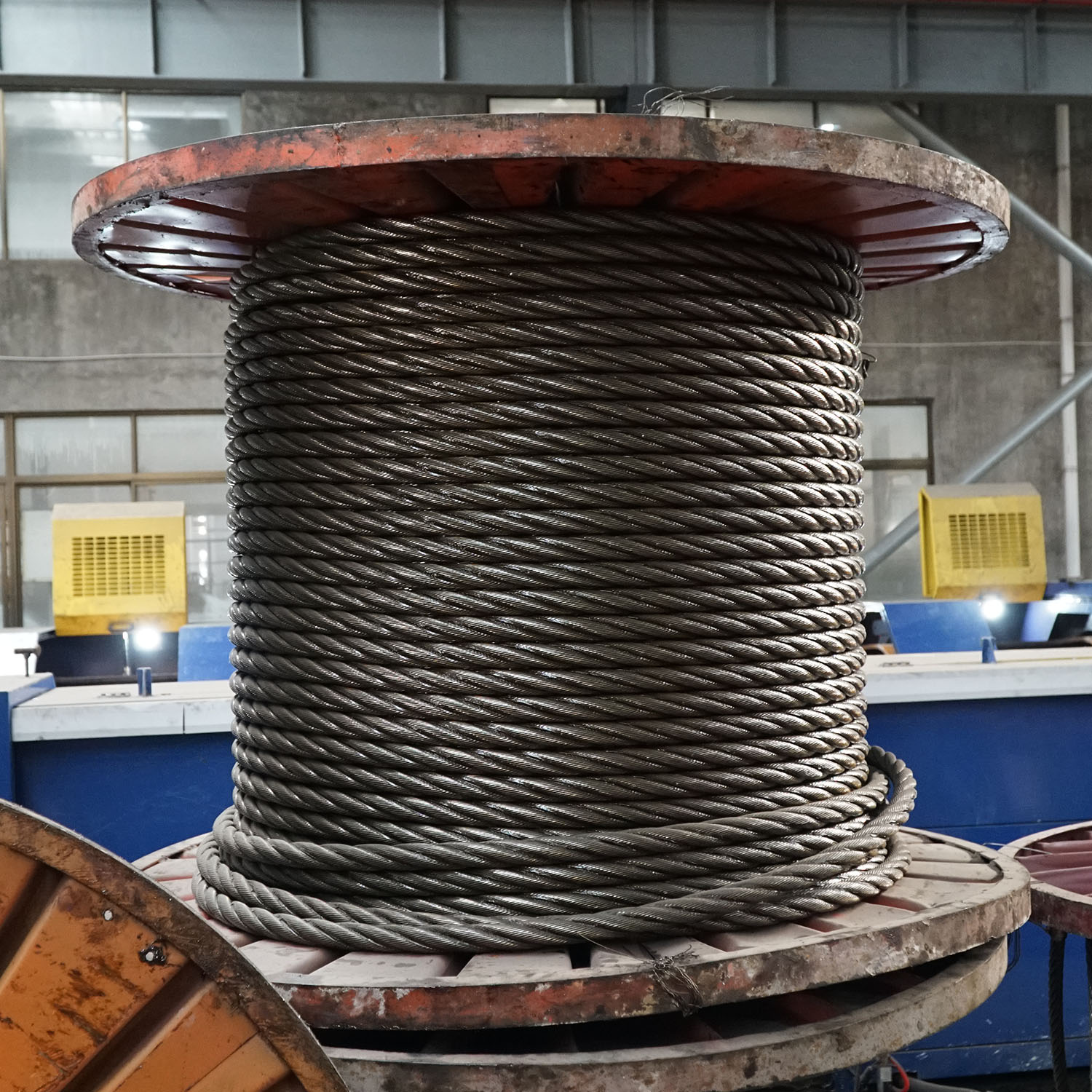Table of Contents
ขนาดเกจสายไฟเป็นสิ่งสำคัญในการทำความเข้าใจสายไฟและสายเคเบิล ขนาดเกจของสายเคเบิลหมายถึงเส้นผ่านศูนย์กลางหรือความหนาของสายเคเบิล ซึ่งมีบทบาทสำคัญในการกำหนดปริมาณกระแสไฟฟ้าที่สามารถไหลผ่านได้อย่างปลอดภัย ในบทความนี้ เราจะเจาะลึกถึงความสำคัญของขนาดเกจของสายไฟ และผลกระทบที่มีต่อระบบไฟฟ้า
ระบบ American Wire Gauge (AWG) เป็นวิธีมาตรฐานที่ใช้ในการวัดขนาดเกจสายไฟในสหรัฐอเมริกา ระบบนี้จะกำหนดค่าตัวเลขให้กับแต่ละขนาดเกจ โดยตัวเลขที่ต่ำกว่าหมายถึงสายไฟที่หนากว่า และตัวเลขที่สูงกว่าแสดงถึงสายไฟที่บางกว่า ตัวอย่างเช่น สายไฟขนาด 10 เกจมีความหนากว่าสายไฟขนาด 16 เกจ
ขนาดเกจของสายเคเบิลมีความเกี่ยวข้องโดยตรงกับความสามารถในการรับกระแสไฟ สายไฟที่หนากว่าจะมีความต้านทานต่ำกว่าและสามารถส่งกระแสไฟฟ้าได้มากกว่าโดยไม่เกิดความร้อนสูงเกินไป ในทางตรงกันข้าม สายไฟที่บางกว่าจะมีความต้านทานสูงกว่าและจำกัดปริมาณกระแสไฟที่สามารถรับได้อย่างปลอดภัย การเลือกขนาดเกจสายไฟที่เหมาะสมสำหรับการใช้งานเฉพาะเป็นสิ่งสำคัญอย่างยิ่งเพื่อให้มั่นใจในความปลอดภัยและประสิทธิภาพ
เมื่อเลือกขนาดเกจสายไฟ จำเป็นต้องพิจารณากระแสสูงสุดที่จะไหลผ่านสายไฟ ข้อมูลนี้สามารถหาได้จากข้อกำหนดของผู้ผลิตหรือปรึกษาวิศวกรไฟฟ้า การใช้สายไฟที่มีขนาดเกจเล็กเกินไปสำหรับการใช้งานตามวัตถุประสงค์อาจทำให้เกิดความร้อนสูงเกินไป แรงดันไฟฟ้าตก และอาจทำให้เกิดอันตรายจากไฟไหม้
นอกเหนือจากความสามารถในการรองรับกระแสไฟแล้ว ขนาดเกจสายไฟยังส่งผลต่อแรงดันไฟฟ้าตกอีกด้วย แรงดันไฟฟ้าตกหมายถึงแรงดันไฟฟ้าที่ลดลงซึ่งเกิดขึ้นเมื่อกระแสไหลผ่านสายไฟ สายไฟที่หนากว่าจะมีความต้านทานต่ำกว่าและมีแรงดันไฟฟ้าตกน้อยกว่าเมื่อเทียบกับสายไฟที่บางกว่า การกำหนดขนาดสายไฟอย่างเหมาะสมสามารถช่วยลดแรงดันไฟฟ้าตก และช่วยให้มั่นใจได้ว่าอุปกรณ์ไฟฟ้าได้รับแรงดันไฟฟ้าที่จำเป็นในการทำงานอย่างมีประสิทธิภาพ
โปรดทราบว่าขนาดเกจสายไฟไม่สามารถใช้แทนกันได้ การใช้สายไฟที่มีขนาดเกจเล็กเกินไปอาจส่งผลให้ระบบไฟฟ้าร้อนเกินไปและทำให้ระบบไฟฟ้าเสียหายได้ ในทางกลับกัน การใช้สายไฟที่มีขนาดเกจใหญ่เกินไปอาจสิ้นเปลืองและไม่จำเป็นได้ การเลือกขนาดเกจสายไฟเป็นสิ่งสำคัญอย่างยิ่งต่อความปลอดภัยและประสิทธิภาพของระบบไฟฟ้า
โดยสรุป การทำความเข้าใจขนาดเกจสายไฟถือเป็นสิ่งสำคัญสำหรับการออกแบบและติดตั้งระบบไฟฟ้า ขนาดเกจของสายเคเบิลจะกำหนดความสามารถในการรองรับกระแสไฟฟ้า แรงดันไฟฟ้าตก และประสิทธิภาพโดยรวม ด้วยการเลือกขนาดเกจสายไฟที่เหมาะสมสำหรับการใช้งานเฉพาะ คุณสามารถมั่นใจในความปลอดภัยและประสิทธิภาพของระบบไฟฟ้าของคุณได้ ปรึกษาผู้เชี่ยวชาญด้านไฟฟ้าเพื่อกำหนดขนาดเกจสายไฟที่ถูกต้องสำหรับโครงการของคุณและหลีกเลี่ยงอันตรายที่อาจเกิดขึ้น

The American Wire Gauge (AWG) system is the standard method used to measure wire cable gauge sizes in the United States. This system assigns a numerical value to each gauge size, with lower numbers indicating thicker wires and higher numbers representing thinner wires. For example, a 10-gauge wire is thicker than a 16-gauge wire.
The gauge size of a wire cable is directly related to its current-carrying capacity. Thicker wires have lower resistance and can carry more current without overheating. In contrast, thinner wires have higher resistance and are limited in the amount of current they can safely handle. It is crucial to select the appropriate wire cable gauge size for a specific application to ensure Safety and efficiency.
When choosing a wire cable gauge size, it is essential to consider the maximum current that will flow through the wire. This information can be obtained from the manufacturer’s specifications or by consulting an electrical engineer. Using a wire cable with a gauge size that is too small for the intended application can Lead to overheating, voltage drops, and potential fire hazards.
In addition to current-carrying capacity, wire cable gauge sizes also impact voltage drop. Voltage drop refers to the decrease in voltage that occurs as current flows through a wire. Thicker wires have lower resistance and experience less voltage drop compared to thinner wires. Properly sizing wire cables can help minimize voltage drop and ensure that electrical devices receive the necessary voltage to operate efficiently.
It is important to note that wire cable gauge sizes are not interchangeable. Using a wire cable with a gauge size that is too small can result in overheating and damage to the electrical system. Conversely, using a wire cable with a gauge size that is too large can be wasteful and unnecessary. Selecting the right wire cable gauge size is crucial for the safety and performance of electrical systems.
In conclusion, understanding wire cable gauge sizes is essential for designing and installing electrical systems. The gauge size of a wire cable determines its current-carrying capacity, voltage drop, and overall performance. By selecting the appropriate wire cable gauge size for a specific application, you can ensure the safety and efficiency of your electrical system. Consult with an electrical professional to determine the correct wire cable gauge size for your project and avoid potential hazards.
